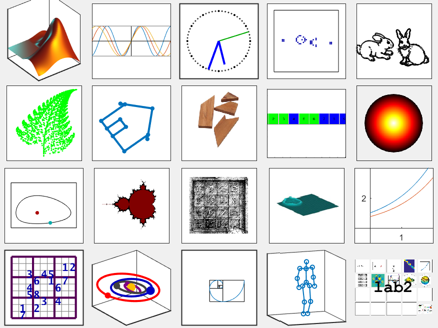
I don't recall where I found this seasonal fractal. And I can't explain how it works. So please submit a comment if you can shed any light on either of these questions.... read more >>

I don't recall where I found this seasonal fractal. And I can't explain how it works. So please submit a comment if you can shed any light on either of these questions.... read more >>

When I was in high school in the 1950's, I didn't know anything about matrices. But I nearly encountered one when I wrote a paper for my physics class about the color scheme that allowed new color TV broadcasts to be compatible with existing black-and-white TV receivers.... read more >>

(Please replace the erroneous posting from yesterday, Nov. 28, with this corrected version.)... read more >>

Here is a very short course in Linear Algebra. The Singular Value Decomposition provides a natural basis for Gil Strang's Four Fundamental Subspaces.... read more >>

My favorite ordinary differential equation provides a good test of ODE solvers, both numeric and symbolic. It also provides a nice illustration of the underlying existence theory and error analysis.... read more >>

I am launching a project that I call Cleve's Laboratory. My most recent Cleve's Corner column in MathWorks News & Notes is about the project. The MATLAB app itself is available for download from the MATLAB Central File Exchange.... read more >>

This is a follow-up to my previous follow-up, posted several days ago. A very careful reader, Bruno Bazzano, contributed a comment pointing out what he called "a small typo" in my code for the classic Gram-Schmidt algorithm. It is more than a small typo, it is a serious blunder. I must correct the code, then do more careful experiments and reword my conclusions.... read more >>
This is a follow-up to my previous post. Classical Gram-Schmidt and Modified Gram-Schmidt are two algorithms for orthogonalizing a set of vectors. Householder elementary reflectors can be used for the same task. The three algorithms have very different roundoff error properties.... read more >>

The QR decomposition is often the first step in algorithms for solving many different matrix problems, including linear systems, eigenvalues, and singular values. Householder reflections are the preferred tool for computing the QR decomposition.... read more >>

A new app employs transformations of a graphic depicting a house to demonstrate matrix multiplication.... read more >>